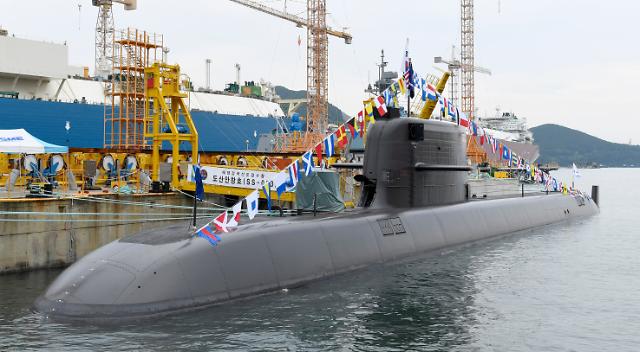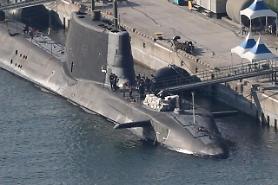
[Yonhap Photo]
The diesel-electric submarine named "Dosan Ahn Chang-ho" joined South Korea's naval submarine fleet after a ceremony on August 13 at the shipyard of Daewoo Shipbuilding & Marine Engineering (DSME). The submarine can sail at a maximum speed of 37 kilometers per hour with about 50 people aboard.
Installed with an air-independent propulsion system using fuel cell batteries, the new submarine can operate underwater for 20 days without surfacing. Diesel-electric submarines suffer from limited underwater endurance, particularly at high speed. When snorkeling, they are vulnerable to detection. An air-independent propulsion system was introduced to obtain long underwater endurance.
The 3,000-ton submarine is 83.5 meters long and 9.6 meters wide. South Korea has built 1,200-ton and 1,800-ton diesel-electric submarines with technical help from Germany’s Howaldtswerke-Deutsche Werft. Through the third phase, submarines of 3,000 tons or more are to be built. The development of a diesel-electric submarine equipped with lithium-ion batteries as a power source is underway.
The Defense Acquisition Program Administration (DAPA), a state body controlled by the defense ministry, aims to deliver a 3,600-ton submarine with lithium-ion batteries in 2026. Lithium-ion batteries are more power-efficient, take up less space and improve underwater navigation capability and high-speed maneuvering compared to conventional lead-acid batteries. Submarines using lead-acid batteries surface regularly to vent poisonous fumes created in the processes of cooling and charging.
Copyright ⓒ Aju Press All rights reserved.


![[FOCUS] Seoul unafraid of Chinas retaliation in pushing for free missile development](https://image.ajunews.com/content/image/2021/05/24/20210524151429605510_278_163.jpg)
![[FOCUS] S. Korea under pressure to take inevitable choice against military buildup by China and Japan](https://image.ajunews.com/content/image/2020/11/12/20201112144822908694_278_163.jpg)